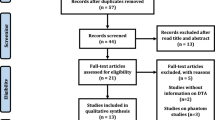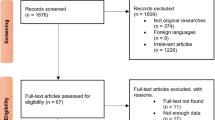Abstract
Artificial intelligence (AI) is a potentially reliable assistant in the diagnosis of osteoporosis. This meta-analysis aims to assess the diagnostic accuracy of the AI-based systems using medical images. We searched PubMed and Web of Science from inception to June 15, 2020, for eligible articles that applied AI approaches to diagnosing osteoporosis using medical images. Quality and bias of the included studies were evaluated with the Quality Assessment of Diagnostic Accuracy Studies (QUADAS-2) tool. The main outcome was the sensitivity and specificity of the performance of the AI-based systems. The data analysis utilized the R Foundation packages of “meta” for univariate analysis and Stata for bivariate analysis. Random effects model was utilized. Seven studies with 3186 patients were included in the meta-analysis. The overall risk of bias of the included studies was assessed as low. The pooled sensitivity was 0.96 (95% CI 0.93–1.00), and the pooled specificity was 0.95 (95% CI 0.91–0.99). However, high heterogeneity was found in this meta-analysis. The results supported that the AI-based systems had good accuracy in diagnosing osteoporosis. However, the high risk of bias in patient selection and high heterogeneity in the meta-analysis made the conclusion less convincing. The application of AI-based systems in osteoporosis diagnosis needs to be further confirmed by more prospective studies in multi-centers including more random samples from complete patient types.




Similar content being viewed by others
Data availability
All data are included in this article and its supplementary file.
Abbreviations
- AI:
-
artificial intelligence
- AUC:
-
area under the receiver operating characteristic curve
- CI:
-
confidence intervals
- CNN:
-
convolutional neural network
- FP:
-
false positive
- FN:
-
false negative
- N:
-
negative
- P:
-
positive
- QUADAS-2:
-
quality assessment of diagnostic accuracy studies tool
- HSROC:
-
hierarchical summary receiver-operating characteristic curve
- TP:
-
true positive
- TN:
-
true negative
References
Sharma P, Pante A, Gross SA (2020) Artificial intelligence in endoscopy. Gastrointest Endosc 91:925–931
Milea D, Najjar RP, Zhubo J et al (2020) Artificial intelligence to detect papilledema from ocular fundus photographs. N Engl J Med 382:1687–1695
Wang P, Berzin TM, Glissen Brown JR, Bharadwaj S, Becq A, Xiao X, Liu P, Li L, Song Y, Zhang D, Li Y, Xu G, Tu M, Liu X (2019) Real-time automatic detection system increases colonoscopic polyp and adenoma detection rates: a prospective randomised controlled study. Gut 68:1813–1819
Ozkan IA, Koklu M, Sert IU (2018) Diagnosis of urinary tract infection based on artificial intelligence methods. Comput Methods Prog Biomed 166:51–59
Wong TY, Bressler NM (2016) Artificial intelligence with deep learning technology looks into diabetic retinopathy screening. JAMA 316:2366–2367
Sadoughi F, Kazemy Z, Hamedan F, Owji L, Rahmanikatigari M, Azadboni TT (2018) Artificial intelligence methods for the diagnosis of breast cancer by image processing: a review. Breast Cancer (Dove Med Press) 10:219–230
Lui TK, Guo CG, Leung WK (2020) Accuracy of artificial intelligence on histology prediction and detection of colorectal polyps: a systematic review and meta-analysis. Gastrointest Endosc 92:821–830.e9
Poly TN, Islam MM, Yang HC, Nguyen PA, Wu CC, Li YJ (2019) Artificial intelligence in diabetic retinopathy: insights from a meta-analysis of deep learning. Stud Health Technol Inform 264:1556–1557
Dick V, Sinz C, Mittlbock M, Kittler H, Tschandl P (2019) Accuracy of computer-aided diagnosis of melanoma: a meta-analysis. JAMA Dermatol 155:1291–1299
Iannattone PA, Zhao X, VanHouten J, Garg A, Huynh T (2020) Artificial intelligence for diagnosis of acute coronary syndromes: a meta-analysis of machine learning approaches. Can J Cardiol 36:577–583
Pan Y, Shi D, Wang H, Chen T, Cui D, Cheng X, Lu Y (2020) Automatic opportunistic osteoporosis screening using low-dose chest computed tomography scans obtained for lung cancer screening. Eur Radiol 30:4107–4116
Areeckal AS, Jayasheelan N, Kamath J, Zawadynski S, Kocher M, David SS (2018) Early diagnosis of osteoporosis using radiogrammetry and texture analysis from hand and wrist radiographs in Indian population. Osteoporos Int 29:665–673
Lee JS, Adhikari S, Liu L, Jeong HG, Kim H, Yoon SJ (2019) Osteoporosis detection in panoramic radiographs using a deep convolutional neural network-based computer-assisted diagnosis system: a preliminary study. Dentomaxillofac Radiol 48:20170344
Cruz AS, Lins HC, Medeiros RVA, Filho JMF, da Silva SG (2018) Artificial intelligence on the identification of risk groups for osteoporosis, a general review. Biomed Eng Online 17:1–12
Ferizi U, Honig S, Chang G (2019) Artificial intelligence, osteoporosis and fragility fractures. Curr Opin Rheumatol 31:368–375
McInnes MDF, Moher D, Thombs BD et al (2018) Preferred Reporting Items for a Systematic Review and Meta-analysis of Diagnostic Test Accuracy Studies: The PRISMA-DTA Statement. JAMA 319:388–396
Whiting PF, Rutjes AW, Westwood ME, Mallett S, Deeks JJ, Reitsma JB, Leeflang MM, Sterne JA, Bossuyt PM (2011) QUADAS-2: a revised tool for the quality assessment of diagnostic accuracy studies. Ann Intern Med 155:529–536
Shim SR, Kim SJ, Lee J (2019) Diagnostic test accuracy: application and practice using R software. Epidemiol Health 41:e2019007
Areeckal AS, Kamath J, Zawadynski S, Kocher M, Sumam SD (2018) Combined radiogrammetry and texture analysis for early diagnosis of osteoporosis using Indian and Swiss data. Comput Med Imaging Graph 68:25–39
Lee K-S, Jung S-K, Ryu J-J, Shin S-W, Choi J (2020) Evaluation of transfer learning with deep convolutional neural networks for screening osteoporosis in dental panoramic radiographs. J Clin Med 9:392
Nam KH, Seo I, Kim DH, Lee JI, Choi BK, Han IH (2019) Machine learning model to predict osteoporotic spine with hounsfield units on lumbar computed tomography. J Korean Neurosurg Soc 62:442–449
Yasaka K, Akai H, Kunimatsu A, Kiryu S, Abe O (2020) Prediction of bone mineral density from computed tomography: application of deep learning with a convolutional neural network. Eur Radiol 30:3549–3557
Mandrekar JN (2010) Receiver operating characteristic curve in diagnostic test assessment. J Thorac Oncol 5:1315–1316
Acknowledgement
The authors thank Tiago V. Pereira for revision of the article that greatly improved the manuscript.
Funding
This study was supported by China Postdoctoral Science Foundation (Grant No. 2019M650598).
Author information
Authors and Affiliations
Contributions
Conception and design, Gao L and Wang W; Analysis and interpretation of the data: Gao L, Jiao T, Feng Q; Drafting of the article: Gao L; Critical revision of the article for important intellectual content: Gao L and Wang W; Final approval of the article: all the authors.
Corresponding authors
Ethics declarations
Ethics approval and consent to participate
Not applicable
Consent for publication
Not applicable
Conflict of interest
None.
Additional information
Publisher’s note
Springer Nature remains neutral with regard to jurisdictional claims in published maps and institutional affiliations.
Supplementary information
ESM 1
(DOCX 465 kb).
Rights and permissions
About this article
Cite this article
Gao, L., Jiao, T., Feng, Q. et al. Application of artificial intelligence in diagnosis of osteoporosis using medical images: a systematic review and meta-analysis. Osteoporos Int 32, 1279–1286 (2021). https://doi.org/10.1007/s00198-021-05887-6
Received:
Accepted:
Published:
Issue Date:
DOI: https://doi.org/10.1007/s00198-021-05887-6




